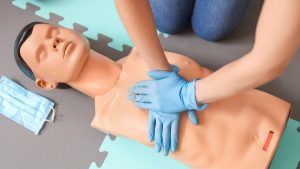Articles / How to treat candidiasis

These are activities that expand general practice knowledge, skills and attitudes, related to your scope of practice.
These are activities that require reflection on feedback about your work.
These are activities that use your work data to ensure quality results.
These are activities that expand general practice knowledge, skills and attitudes, related to your scope of practice.
These are activities that require reflection on feedback about your work.
These are activities that use your work data to ensure quality results.
Three quarters of women experience at least one episode of candidiasis in their lifetime, and for 5-10% of people it can be a recurrent, irritating and uncomfortable intrusion, says Dr Sara Whitburn, a GP and senior medical educator with Sexual Health Victoria.
Dr Whitburn says that bacterial vaginosis and candidiasis, or thrush, are the two most common non-sexually transmitted reasons for vaginal discharge and discomfort. There are distinct differences between the two, but they are sometimes confused or misdiagnosed.
Bacterial vaginosis may have a watery discharge that can be malodourous. Thrush on the other hand will often have a thicker, ‘cottage cheese’ type of discharge and be accompanied by the classic itching.
But there can be other thrush symptoms too, Dr Whitburn says.
“Often there’s also quite a lot of swelling. I think people aren’t aware that you can have quite a lot of oedema when somebody has thrush. There’s the classic red rash that can be itchy or it can be painful, and if thrush is severe you can get quite nasty skin breakdown. You can get excoriation and fissures, especially after sexual intercourse.”
And she adds, sometimes there can be a mixture of both thrush and bacterial vaginosis.
When it comes to acute thrush care, Dr Whitburn says it’s crucial to talk about possible triggers and appropriate genital skin care.
For thrush treatment, Dr Whitburn says any of the common over the counter ‘azoles’ are appropriate to use, and she often recommends clotrimazole or miconazole.
But treatment time may be longer than you think.
“For clotrimazole you’d want to use the cream for a minimum of three days but even up to six days. And with miconazole it’s very similar. Some people can use the pessaries as a single dose, but I find that most people get a better response if they’re using these creams for up to six days, Dr Whitburn says.
‘Another option is the over-the-counter fluconazole capsule. Some people can use the single 150 mg dose but if someone has still has symptoms, they can repeat it in 72 hours for 3 doses until they get relief.”
Nystatin pessaries or cream is another option, but the treatment time depends on if it’s being used once or twice a day.
“If you use them once a day then you have to let people know that they need to use it for 14 days. And if they use it twice a day, they can use it for seven days,” Dr Whitburn says.
If they aren’t responding after two weeks of ‘azole’ use Dr Whitburn says it is time to suspect non-albicans candida which can be resistant to common OTC antifungals.
If that is the case, or microbiology confirms it is non-albicans candida, she suggests a 600mg compounded boric acid pessary for 14 days used at night. But she cautions “you do need to warn people that they should not be ingested orally. It is important to take medicine safety precautions so they are not accidentally swallowed. They should only be used vaginally. ’
Another option is Amphotericin B lozenges which are throat lozenges but can be used vaginally twice a day for two weeks, but you do need to educate patients on how to use them.
“They need to be moistened, before use. And you do need to warn people that they are very yellow and can leave a yellow residue either on bedsheets or underwear,” she says.

The third option is to use nystatin pessaries or cream once a day for 14 days or twice a day, for seven days.
Recurrent or chronic thrush can present differently, Dr Whitburn says. Often the discharge isn’t the main symptom but the pain, oedema, pain during or after sex, rash or even fissures are more of an issue. These can have an impact on relationships, she says. Thrush is considered recurrent or chronic if someone has 4 or more episodes in 12 months.
Treatment requires two steps – the acute induction phase of two weeks on an ‘azole’ of choice to get good symptom control, followed by a suppression phase.
“Most people get the best outcomes with suppression if they’re using oral fluconazole,” Dr Whitburn says.
“The dose is normally somewhere between 100 mg and 200 mg once or twice a week. The most commonly used regime is 150mg weekly but sometimes this is not enough to suppress the symptoms. If this the case, then you can try 100mg twice a week.”
“This can be really useful to people who seem to have three to four days symptom free and then they have what I call breakthrough symptoms,” she continues.
She recommends treating for up to six months with a six week check-up “to make sure that things are improving and that they’re feeling like they’re getting good symptom control.”
You cannot, however, use oral fluconazole if the patient is pregnant. During pregnancy the recommended suppression is a topical antifungal two to three times a week for six months.
Dr Whitburn says there isn’t good evidence for routinely treating sexual partners unless they have symptoms. If the partner has a penis and has balanitis symptoms after sexual intercourse, then treatment with a combined hydrocortisone 1% and an antifungal cream can help with symptoms.
Check out this article for information on how to treat bacterial vaginosis.
Recommended resources:
Based on this educational activity, complete these learning modules to gain additional CPD.

Fracture Prevention and Osteoporosis Management After Menopause

Ophthalmology Update: New Treatments for Old Conditions

Testosterone for Men – Common Myths and Recent Development

Conversation Strategies for Unfunded Vaccinations



Yes, if the referral process involves meaningful collaboration with GPs
Yes
No
Listen to expert interviews.
Click to open in a new tab
Browse the latest articles from Healthed.
Once you confirm you’ve read this article you can complete a Patient Case Review to earn 0.5 hours CPD in the Reviewing Performance (RP) category.
Select ‘Confirm & learn‘ when you have read this article in its entirety and you will be taken to begin your Patient Case Review.